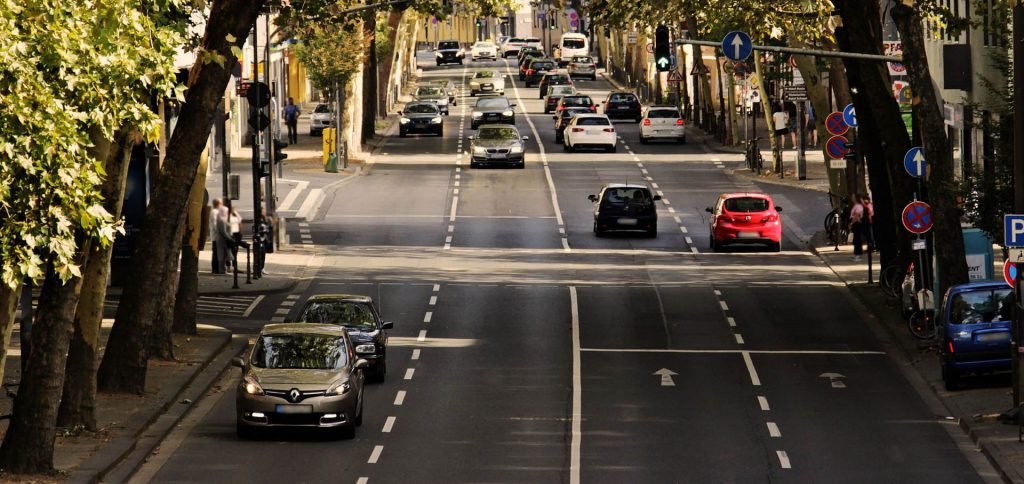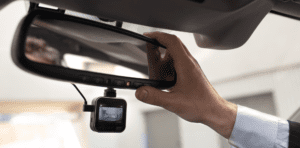Compare cheap car insurance
✔ Compare cheap car insurance quotes
✔ Over 110 insurance providers
✔ Get a quote in minutes
✔ Save up to £504*


- Which cars are in car insurance group 3?
- Why are cars in group 3 the cheapest?
- Are group 3 cars a good option for young drivers?
- Cars in group 3 include
- What insurance group would my electric/hybrid car be in?
- What insurance group would my classic car be in?
- What insurance group would my modified car be in?
- Compare car insurance
Car Insurance Group 3 – All you need to know.
Choosing a car in a low insurance group, such as group 3, can be a cost-effective way of reducing your car insurance premium. Insurance companies classify cars into groups, ranging from 1 to 50, based on factors such as the cost of the car, the size of its engine, and the cost of repairs.
While other factors such as your age, location, driving experience, and occupation also play a role in determining your insurance premium, selecting a car in a lower insurance group can significantly lower your costs.
It’s worth noting that, car insurance group alone is not the only determinant when calculating the premium, however, picking a car from a lower group can be a cost-effective way to lower the premium cost.
In summary, choosing a car in a low insurance group, such as group 3, can be a smart way to reduce your car insurance premium as it takes into account the cost of the car, the size of its engine, and the cost of repairs.
Which cars are in car insurance group 3?
Cars that are typically classified in car insurance group 3 are generally considered to be more affordable and less powerful than those in higher groups. Some examples of cars that are commonly found in group 3 include:
- Ford Focus
- Vauxhall Astra
- Peugeot 308
- Skoda Octavia
- Volkswagen Golf
- Toyota Auris
- Honda Civic
- Nissan Pulsar
- Fiat 500
- Citroen C4
These cars are generally considered to be more affordable in terms of purchase price and have lower engine capacities, which can make them less powerful and less likely to be involved in accidents. Additionally, they are typically older models, which means they are less expensive to replace or repair in case of an accident.
It’s worth noting that the classification of cars into insurance groups can vary between different insurance providers and can also depend on the specific trim level and engine size of a particular car. Therefore, it is always recommended to check with your insurance provider for the most accurate and up-to-date information.
Why are cars in group 3 the cheapest?
Cars that are classified in car insurance group 3 are considered to be among the cheapest to insure for a few reasons.
Firstly, these cars are typically more affordable in terms of purchase price, which means that they are less expensive to replace or repair in the event of an accident. Additionally, they tend to have lower engine capacities, which makes them less powerful and less likely to be involved in accidents.
Secondly, cars that are classified in group 3 tend to be older models, which means that they are less valuable and less expensive to repair or replace. This is because newer cars tend to have more advanced technology, which can be more expensive to repair.
Finally, cars that are classified in group 3 are also considered to be less risky by insurers. They are believed to be driven by more responsible drivers, and therefore, they are less likely to be involved in accidents. This means that insurers can afford to offer lower premiums for these cars.
It’s worth noting that, car insurance group alone is not the only determinant when calculating the premium, however, picking a car from a lower group can be a cost-effective way to lower the premium cost.
Are group 3 cars a good option for young drivers?
Group 3 cars can be a good option for young drivers, as they are typically more affordable and less powerful than cars in higher groups. This can make them less expensive to insure and less likely to be involved in accidents. Additionally, they tend to be older models, which can also be less expensive to repair or replace in the event of an accident.
Another benefit of group 3 cars for young drivers is that they are often considered to be less risky by insurers. This is because they are believed to be driven by more responsible drivers, and therefore, they are less likely to be involved in accidents. This means that insurers can afford to offer lower premiums for these cars.
However, it is worth noting that the cost of insurance can also depend on other factors such as the young driver’s driving experience and history, as well as their age, location, and occupation. Therefore, it is always recommended to shop around for quotes and compare prices from different insurance providers.
In summary, group 3 cars can be a good option for young drivers as they tend to be more affordable, less powerful and less likely to be involved in accidents. They are also considered to be less risky by insurers and can be an affordable option for young drivers looking for a car.
Cars in group 3 include:
Here are a few examples of cars that are typically classified in car insurance group 3:
- Ford Ka
- Vauxhall Corsa
- Peugeot 107
- Volkswagen Polo
- Toyota Yaris
- Hyundai i10
- Skoda Fabia
- Renault Clio
- Honda Jazz
- Mazda2
It’s worth noting that the insurance group of a car can vary depending on the specific model, trim level and year of manufacture, so it’s best to check with your insurance provider or use online tools to check the insurance group of a specific car. Also, the car models in different countries might be different. It’s always recommended to check with your local seller or car dealership.
What insurance group would my electric/hybrid car be in?
When it comes to insuring an electric or hybrid car, the insurance group it falls into can have a significant impact on the cost of your premium. Insurance groups are a way of categorising vehicles based on factors such as their value, performance, and safety features.
Electric cars, also known as EVs, are typically placed in a lower insurance group compared to their gasoline or diesel counterparts. This is because they are generally considered to be less powerful and less of a theft risk. Additionally, the battery and other electric components of an EV may be covered under the manufacturer’s warranty, which can also help to lower the cost of insurance.
Hybrid cars, which are powered by both an electric motor and a traditional gasoline engine, can fall into a wider range of insurance groups depending on the model. Some hybrids, such as the Toyota Prius, are considered to be low-performance vehicles and can be placed in a lower insurance group, while others, such as the BMW i8, may be considered to be high-performance vehicles and can be placed in a higher group.
It’s worth noting that some insurance companies may offer discounts for electric and hybrid cars, as they are considered to be more environmentally friendly and have lower emissions. Additionally, the location of charging stations and the availability of repair shops can also affect the cost of insuring an electric or hybrid car.
In conclusion, the insurance group of an electric or hybrid car can vary depending on the specific model and other factors. Electric cars are generally considered to be less powerful and less of a theft risk and therefore, tend to fall into lower insurance groups. While hybrid cars can fall into a wider range of insurance groups, depending on the model, some hybrids may be considered to be low-performance vehicles and can be placed in a lower insurance group, while others may be considered to be high-performance vehicles and placed in a higher group.
What insurance group would my classic car be in?
When it comes to insuring a classic car, the insurance group it falls into can have a significant impact on the cost of your premium. Classic cars are typically placed in a higher insurance group compared to modern vehicles. This is because they are considered to be more valuable, rare, and harder to find replacement parts. Additionally, classic cars may require more specialized and experienced mechanics to repair and maintain them.
It’s worth noting that some insurance companies may offer special policies for classic cars, which can provide cover for things like agreed value, mileage restrictions, and use for shows and events. Additionally, many classic car owners choose to insure their vehicles under a separate classic car policy which can provide specialised cover and protection.
In conclusion, classic cars are typically placed in a higher insurance group compared to modern vehicles, due to their value, rarity, and specialized maintenance requirements. Many insurance companies offer specialized policies for classic cars, which can provide cover for things like agreed value, mileage restrictions, and use for shows and events.
What insurance group would my modified car be in?
When it comes to insuring a modified car, the insurance group it falls into can have a significant impact on the cost of your premium. Modified cars are typically placed in higher insurance groups as they are considered to be riskier and more expensive to repair. The modifications such as engine tuning, suspension lowering, and body kits, can increase the car’s performance and value, but also make them more likely to be involved in accidents and more expensive to fix.
It’s worth noting that some insurance companies may not cover certain types of modifications, or may require additional documentation or inspections to ensure that the modifications are safe and meet legal requirements. In some cases, modified cars may also require specialized insurance policies that provide cover for specific modifications.
In conclusion, modified cars are typically placed in higher insurance groups as they are considered to be riskier and more expensive to repair. Some insurance companies may not cover certain types of modifications or may require additional documentation or inspections. In some cases, modified cars may also require specialized insurance policies that provide cover for specific modifications.
Compare car insurance
Comparoo is a comparison website that allows you to compare car insurance quotes from over 110 providers. By using Comparoo, you can find the cheapest car insurance policy that suits your needs. With just a few clicks, you can compare policies from different providers and find the best deal.
Comparoo allows you to compare policies based on different factors such as cover, deductibles, and discounts. This means that you can find a policy that fits your budget and your cover needs.
On average, Comparoo customers can save up to £504 by comparing car insurance quotes. This is a significant saving that can help you to lower your car insurance costs and keep more money in your pocket.
If you’re looking for cheap car insurance, Comparoo is a great resource to help you find the best deal. With over 110 providers to choose from, you’re sure to find a policy that fits your needs and budget.










